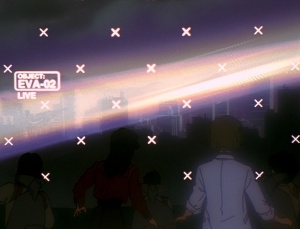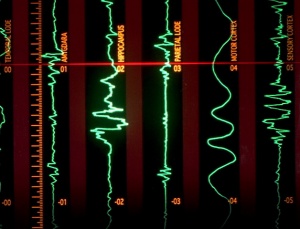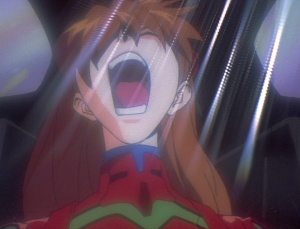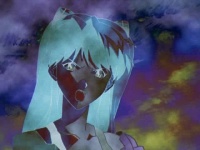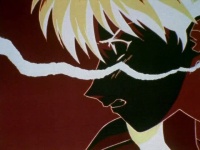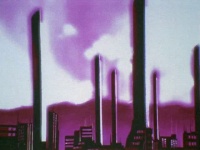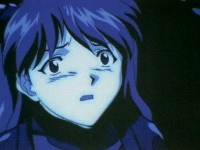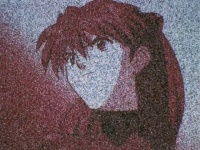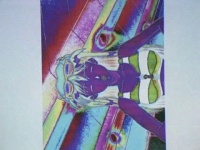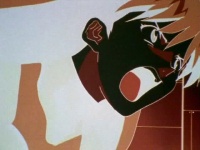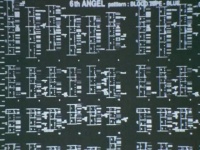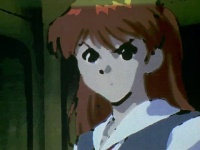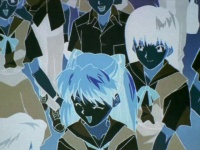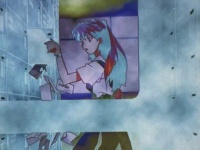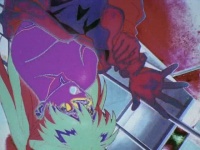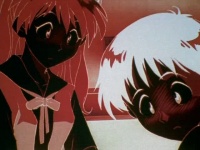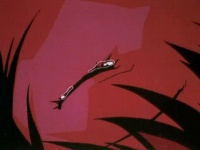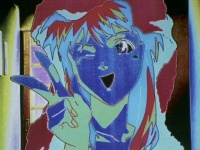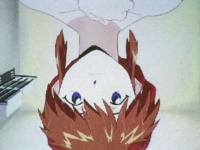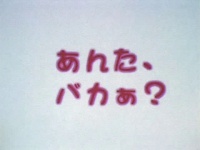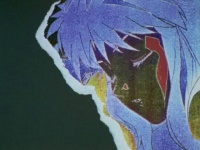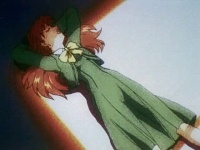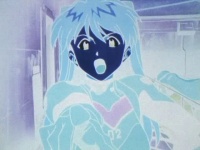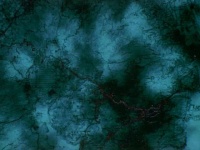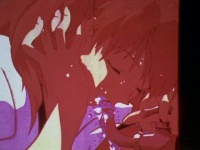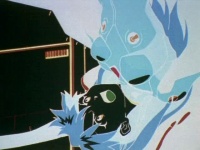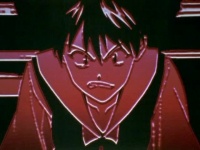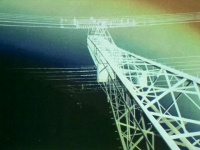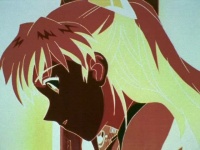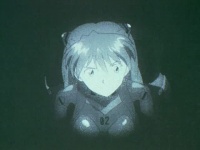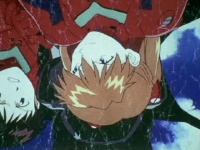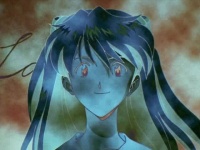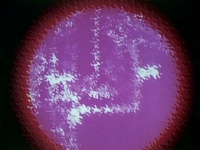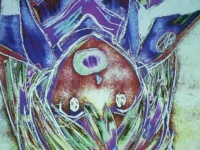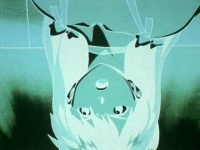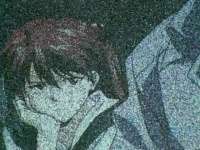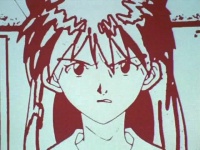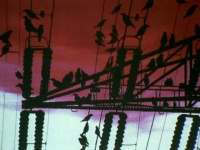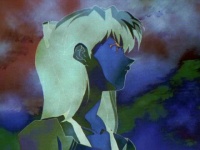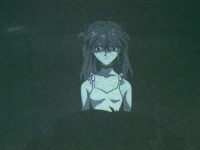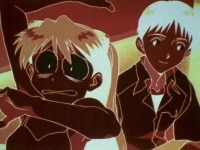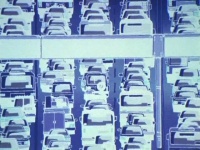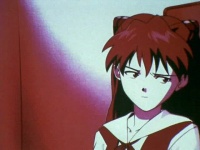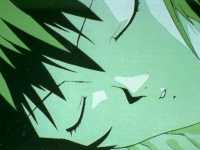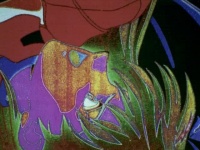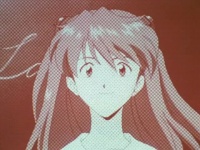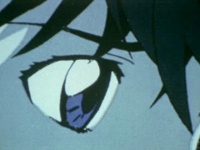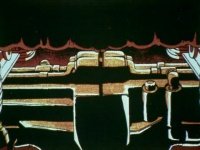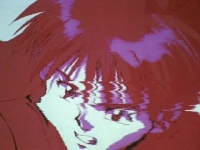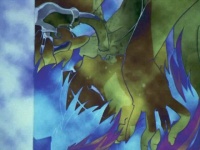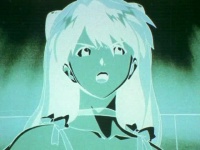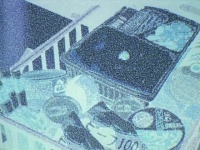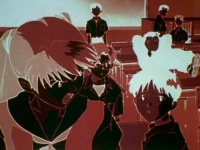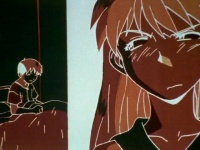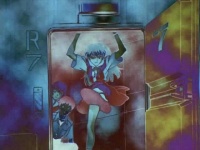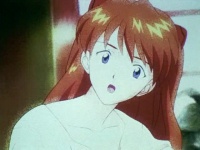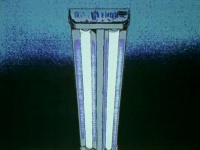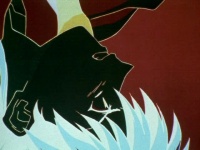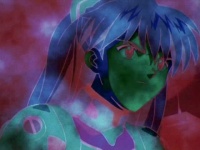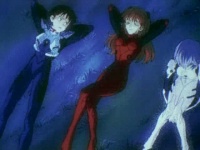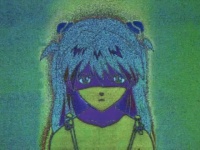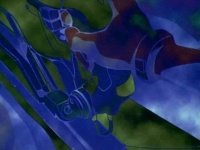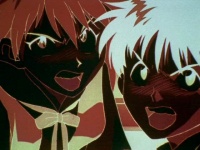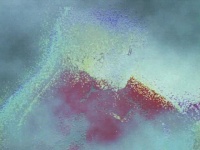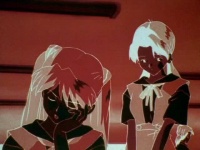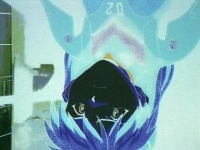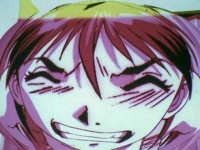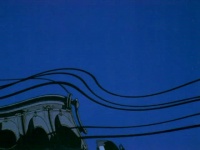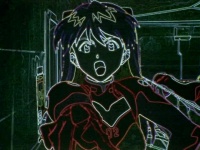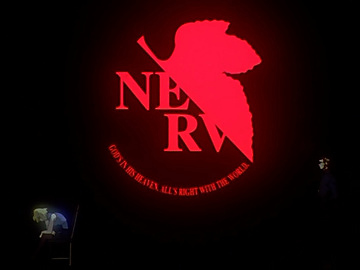User:Ran1: Difference between revisions
No edit summary |
No edit summary |
||
| (3 intermediate revisions by one other user not shown) | |||
| Line 1: | Line 1: | ||
==What is this?== | ==What is this?== | ||
This is not actually user page, for all the blissful wanderers out there. It is a "pitch" page for an critical essay on Neon Genesis Evangelion and its use of montage. Currently, I am in the beginning stages of writing the essay, and I will be posting bits and pieces of the essay as I go along, in hopes of getting feedback from the Wiki Users. | This is not actually user page, for all the blissful wanderers out there. It is a "pitch" page for an critical essay on Neon Genesis Evangelion and its use of montage. Currently, I am in the beginning stages of writing the essay, and I will be posting bits and pieces of the essay as I go along, in hopes of getting feedback from the Wiki Users. | ||
''This page is currently being updated and transformed into a proper article, please see this page instead: [[Theory and Analysis:Film Montage Theory in Evangelion]]''. | |||
==Current Status== | ==Current Status== | ||
| Line 246: | Line 248: | ||
2.What goes even deeper is the symbol that sits in the middle of the two of them: a glowing symbol of NERV. What we can see here is the organization and symbol that brought the two of them together, and then drove the two apart. Unlike the previous image where the composition isn't as important as the words being spoken, here we have an image of the very essence of their relationship. For Gendo, NERV is a tool to retrieve his wife. Thus, for the most part he treats those who are a part of it like tools. His emotional detachment to many of the characters is quite obvious throughout the series. For Ritsuko, however, NERV is the justification for her being, what makes Ritsuko Ritsuko is NERV itself, and she treats it very seriously. A classic “conflict of interests” manifested through the organization itself is brilliantly played in this scene through both words and visuals. | 2.What goes even deeper is the symbol that sits in the middle of the two of them: a glowing symbol of NERV. What we can see here is the organization and symbol that brought the two of them together, and then drove the two apart. Unlike the previous image where the composition isn't as important as the words being spoken, here we have an image of the very essence of their relationship. For Gendo, NERV is a tool to retrieve his wife. Thus, for the most part he treats those who are a part of it like tools. His emotional detachment to many of the characters is quite obvious throughout the series. For Ritsuko, however, NERV is the justification for her being, what makes Ritsuko Ritsuko is NERV itself, and she treats it very seriously. A classic “conflict of interests” manifested through the organization itself is brilliantly played in this scene through both words and visuals. | ||
1.This shot is manifold in dichotomy. First we have what is the obvious: Ritsuko mourning the loss of her cat, and Gendo angry over the loss of the dummy system. But what we have here goes a little deeper than that: What we see now is a Ritsuko who has lost all love for her work, and a Gendo who is working for his love. This shot is a manifestation of the things that it cost the two of them: Ritsuko has lost the things that gave her life justification, Gendo has lost his “soul” and empathy in the process of executing his plan for instrumentality. | |||
2.What goes even deeper is the symbol that sits in the middle of the two of them: a glowing symbol of NERV. What we can see here is the organization and symbol that brought the two of them together, and then drove the two apart. Unlike the previous image where the composition isn't as important as the words being spoken, here we have an image of the very essence of their relationship. For Gendo, NERV is a tool to retrieve his wife. Thus, for the most part he treats those who are a part of it like tools. His emotional detachment to many of the characters is quite obvious throughout the series. For Ritsuko, however, NERV is the justification for her being, what makes Ritsuko Ritsuko is NERV itself, and she treats it very seriously. A classic “conflict of interests” manifested through the organization itself is brilliantly played in this scene through both words and visuals. | |||
1.This shot is manifold in dichotomy. First we have what is the obvious: Ritsuko mourning the loss of her cat, and Gendo angry over the loss of the dummy system. But what we have here goes a little deeper than that: What we see now is a Ritsuko who has lost all love for her work, and a Gendo who is working for his love. This shot is a manifestation of the things that it cost the two of them: Ritsuko has lost the things that gave her life justification, Gendo has lost his “soul” and empathy in the process of executing his plan for instrumentality. | |||
2.What goes even deeper is the symbol that sits in the middle of the two of them: a glowing symbol of NERV. What we can see here is the organization and symbol that brought the two of them together, and then drove the two apart. Unlike the previous image where the composition isn't as important as the words being spoken, here we have an image of the very essence of their relationship. For Gendo, NERV is a tool to retrieve his wife. Thus, for the most part he treats those who are a part of it like tools. His emotional detachment to many of the characters is quite obvious throughout the series. For Ritsuko, however, NERV is the justification for her being, what makes Ritsuko Ritsuko is NERV itself, and she treats it very seriously. A classic “conflict of interests” manifested through the organization itself is brilliantly played in this scene through both words and visuals. | |||
{{MontageBox | |||
|float = left | |||
|columns = 4 | |||
|title = ''Episode 24 Wide Shots'' | |||
|image1 = [[File:24 ritsuko gendo prison.jpg|200px]] | |||
|image2 = [[File:Kaworu and Shinji 01.png|200px]] | |||
|image3 = [[File:24 C308 deliberation.jpg|200px]] | |||
|image4 = [[File:Shinji misato lakeside.jpg|200px]] | |||
|caption = | |||
"Episode 24 Shots" | |||
Wide shots used for argument | |||
}} | |||
Latest revision as of 01:42, 5 May 2020
What is this?
This is not actually user page, for all the blissful wanderers out there. It is a "pitch" page for an critical essay on Neon Genesis Evangelion and its use of montage. Currently, I am in the beginning stages of writing the essay, and I will be posting bits and pieces of the essay as I go along, in hopes of getting feedback from the Wiki Users.
This page is currently being updated and transformed into a proper article, please see this page instead: Theory and Analysis:Film Montage Theory in Evangelion.
Current Status
As of Feb. 24, 2010: Posting the intial outline/preface/proposal
As of Feb. 25, 2010: Going into a bit more detail in the montage introduction, images added.
As of Feb. 26, 2010: 1st montage interpretation
The Essay
Evangelion is usually looked at in a narrative sense, but it is necessary to also assess it at the technical level of cinematography, and specifically in this essay, at the level of montage. There are several montage sequences in the series, but they are most notable and pronounced in Episodes 14, 22, and 26'. Though there are others, the montage sequences in these three episodes will be broken down in the first edition of this critical essay.
Introduction to the Classical Theory of Montage:
The montage theory was developed by Soviet filmmaker/theorist Sergei Eisenstein in 1922 with his seminal cinematic treatise A Dialectic Approach to Film Form. This treatise, in summary, presented the theory in these terms:
- 1.The images in the montage are not there for the explicit reason of existing as separate identities. The key aspect of the montage sequence is that the images are all linked to one another. Each image's meaning builds and is built upon by the previous and consecutive images.
- 2.According to Eisenstein, the montage theory solved the “specific problem of cinema”- medium specificity.
- 3.The montage is, in essence, is “a conflict between images” in which the incomplete subtext from the previous two images “collide” together, and present a newer, complete meaning at the end of the montage.
An application of this theory in Evangelion would be this sequence of shots:
How versed is Anno in in these techniques?
With these fundamental aspects in mind, let it be known that it is currently unclear whether or not Anno had ever come across any of Eisenstein's theoretical papers. Any good student of film or animation should at some point, because his theories were extremely important to the development of modern cinema, but it should be realized that the status of Anno as a good films student is a matter of question – considering that he admitted to being familiar with Jean Luc Godard, another important montage theorist, but became familiar with several Japanese filmmakers who used Godard's techniques in a similar fashion.
The montage, and the theory behind it, however, has been more or less assimilated into the universal film-making language, however. To say that these montage theory is irrelevant due to the fact that it is still in question about Anno's familiarity with the subject, it is most likely the case that he was knowledgeable about it just by being able to make one.
Episode 22
The montage sequences that are most notable are the ones presented in the "mind-rape" scenes, in which Asuka has her deepest, darkest memories brought to the surface, further compounding her insecurities. As her forced introspection reaches the point of climax, the viewer is presented with a total deconstruction of Asuka in every sense of the word. We see her thoughts, desires, and feelings laid before us, and there reaches a point in which we see the beginning of Asuka's downward spiral, her rejection of The Other, most notably manifest in three beings: Her mother, Kaji, and Shinji.
Here is the final of these mind-rape montages:
It is apparent in the context of the montages as well, even the mindrape itself, Asuka is continually placed in positions of weakness. This is evidenced by the "Arael avatar" standing over the fetal-position, naked Asuka, and the "one of many" crowd scene. More on this later, because I am awaiting feedback.
== For differing opinions and discussions about these images, please take a look at this thread
Subverting Wide-Shot stereotypes in Episode 24 of Neon Genesis Evangelion
There is a reasonable adage about the use of the wide or extreme-wide shot in anime series: they are used to save money. With the audience lacking the ability to see the small mouth movements, the animators are able to save frames, and save funds on the production budget. However, amongst fans of a more visceral type, these shots can often seem “lazy” at best, or seemingly a forewarning of a rapidly failing production.
Evangelion was no stranger to these production troubles-- the ship was sinking fast around the time that the last five or so episodes were made. But that being said, these wide shots do not seem to fit the usual “lazy” stereotype that seems to fit so well on the mantle of other anime series that were made with much less directorial care than Evangelion. In fact, in a way startling similar to other media that have used the wide shot, these compositions often give the impression of a “painting” rather than simply a frame of animation.
Following Eisenstein's memorable words that “cinema is a synthesis between art and industry”, there is no reason why the “budget-saving” wide shots in Evangelion can't be artistic. With the help of some sub textual readings into the wide shots on both a narrative and technical level, this essay hopes to present that Evangelion's wide shots are indeed a manifestation of Eisenstein's synthesis.
For the sake of reference, the following wide shots will be used for the sake of this argument:
| Episode 24 Wide Shots | |||
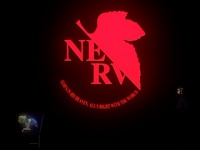 |
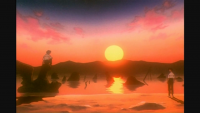 |
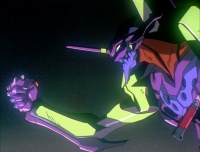 |
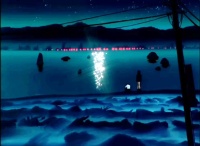
|
|
"Episode 24 Shots" Wide shots used for argument | |||
1.This shot is manifold in dichotomy. First we have what is the obvious: Ritsuko mourning the loss of her cat, and Gendo angry over the loss of the dummy system. But what we have here goes a little deeper than that: What we see now is a Ritsuko who has lost all love for her work, and a Gendo who is working for his love. This shot is a manifestation of the things that it cost the two of them: Ritsuko has lost the things that gave her life justification, Gendo has lost his “soul” and empathy in the process of executing his plan for instrumentality.
2.What goes even deeper is the symbol that sits in the middle of the two of them: a glowing symbol of NERV. What we can see here is the organization and symbol that brought the two of them together, and then drove the two apart. Unlike the previous image where the composition isn't as important as the words being spoken, here we have an image of the very essence of their relationship. For Gendo, NERV is a tool to retrieve his wife. Thus, for the most part he treats those who are a part of it like tools. His emotional detachment to many of the characters is quite obvious throughout the series. For Ritsuko, however, NERV is the justification for her being, what makes Ritsuko Ritsuko is NERV itself, and she treats it very seriously. A classic “conflict of interests” manifested through the organization itself is brilliantly played in this scene through both words and visuals.
1.This shot is manifold in dichotomy. First we have what is the obvious: Ritsuko mourning the loss of her cat, and Gendo angry over the loss of the dummy system. But what we have here goes a little deeper than that: What we see now is a Ritsuko who has lost all love for her work, and a Gendo who is working for his love. This shot is a manifestation of the things that it cost the two of them: Ritsuko has lost the things that gave her life justification, Gendo has lost his “soul” and empathy in the process of executing his plan for instrumentality.
2.What goes even deeper is the symbol that sits in the middle of the two of them: a glowing symbol of NERV. What we can see here is the organization and symbol that brought the two of them together, and then drove the two apart. Unlike the previous image where the composition isn't as important as the words being spoken, here we have an image of the very essence of their relationship. For Gendo, NERV is a tool to retrieve his wife. Thus, for the most part he treats those who are a part of it like tools. His emotional detachment to many of the characters is quite obvious throughout the series. For Ritsuko, however, NERV is the justification for her being, what makes Ritsuko Ritsuko is NERV itself, and she treats it very seriously. A classic “conflict of interests” manifested through the organization itself is brilliantly played in this scene through both words and visuals.
1.This shot is manifold in dichotomy. First we have what is the obvious: Ritsuko mourning the loss of her cat, and Gendo angry over the loss of the dummy system. But what we have here goes a little deeper than that: What we see now is a Ritsuko who has lost all love for her work, and a Gendo who is working for his love. This shot is a manifestation of the things that it cost the two of them: Ritsuko has lost the things that gave her life justification, Gendo has lost his “soul” and empathy in the process of executing his plan for instrumentality.
2.What goes even deeper is the symbol that sits in the middle of the two of them: a glowing symbol of NERV. What we can see here is the organization and symbol that brought the two of them together, and then drove the two apart. Unlike the previous image where the composition isn't as important as the words being spoken, here we have an image of the very essence of their relationship. For Gendo, NERV is a tool to retrieve his wife. Thus, for the most part he treats those who are a part of it like tools. His emotional detachment to many of the characters is quite obvious throughout the series. For Ritsuko, however, NERV is the justification for her being, what makes Ritsuko Ritsuko is NERV itself, and she treats it very seriously. A classic “conflict of interests” manifested through the organization itself is brilliantly played in this scene through both words and visuals.
| Episode 24 Wide Shots | |||
 |
 |
 |

|
|
"Episode 24 Shots" Wide shots used for argument | |||
